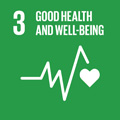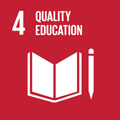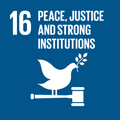- Docente: Piera Versura
- Credits: 1
- Language: Italian
- Teaching Mode: In-person learning (entirely or partially)
- Campus: Bologna
- Corso: Single cycle degree programme (LMCU) in Medicine and Surgery (cod. 5904)
Learning outcomes
The module aims to develop in medical students the ability to communicate in an empathetic and effective manner, and to acquire techniques for conveying health information in a clear and accessible way to the general public.
Students will gain an understanding of the role of the media in health communication and learn how to collaborate with media professionals.
The module also addresses the ethical and legal issues related to medical communication.
By the end of the course, students will be able to recognize the influence of the media on public perceptions of health and medicine, critically analyze the main distortions in the representation of medical topics, and collaborate in a conscious and strategic way with the media to disseminate accurate and understandable health messages.
This course aligns with SDG 3 (Good Health and Well-being) by promoting the dissemination of accurate, evidence-based, and accessible health information to the public.
It supports SDG 4 (Quality Education) by fostering essential communication and critical thinking skills in future healthcare professionals.
Moreover, it contributes to SDG 16 (Peace, Justice and Strong Institutions) by educating students on responsible, ethical, and transparent medical communication, thereby strengthening trust in public health messaging and institutions.
Course contents
The module is structured into four main thematic units, delivered through a combination of theoretical input and critical discussion:
The Role of the Media in Health Communication
An introduction to the fundamental principles of public health communication.
Analysis of how the media shape public perception of medicine, prevention, and health emergencies.
How Traditional and Digital Media Work (TV, Print, Radio, Web, and Social Media)
A brief overview of the language and production logic of different media platforms.
Focus on the distinction between news, opinion, in-depth reporting, and press releases.
Analysis of recent news articles, television segments, and social media content related to health topics.
Misrepresentation and Distortion in Medical Communication
Common issues such as oversimplification, sensationalism, and excessive medicalization.
How to identify inaccurate or potentially harmful communication.
The role and responsibility of medical sources (physicians, researchers, institutions).
Communicating Effectively with the Media: Tools and Strategies for Future Physicians
Basic principles for engaging with journalists, understanding editorial needs, and conveying clear, accurate, and contextualized messages.
Readings/Bibliography
Material provided by the Teacher, including selected scientific articles and journalistic sources, will be made available on the course’s Virtual Learning Platform.
Teaching methods
Lectures, analysis of real-world cases, and practical exercises on texts and media content.
Assessment methods
The course will be assessed on a pass/fail basis.
To obtain a “pass”, students are required to actively participate in class and attend more than 66% of the scheduled sessions.
Teaching tools
Video projector, Virtual Learning Platform, multimedia articles, podcasts, and audiovisual clips.
Office hours
See the website of Piera Versura
SDGs



This teaching activity contributes to the achievement of the Sustainable Development Goals of the UN 2030 Agenda.
